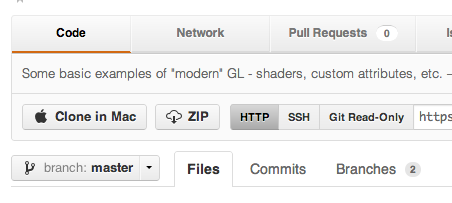-
Notifications
You must be signed in to change notification settings - Fork 186
Home
These tutorials are specific to LWJGL devs. They use the lwjgl-basics API to reduce clutter and minimize GL boilerplate. Each of the Shaders tutorials includes a LibGDX port.
- Display Creation
- OpenGL Textures
- Batching Sprites
- Frame Buffer Objects
- Intro to Shaders
-
- Creating Your own 2D Renderer
- Intro to LibGDX Textures and Pixmaps
- Creating a Fruit Ninja Style Swipe
- Blurs for Mobile Applications
- 2D Per-Pixel Shadows on the GPU
- Mesh and ImmediateModeRenderer Tutorials
- Custom Sprite Batcher in LibGDX (WIP)
- LibGDX
- GLSL Sandbox
- Misc
You can also use the lwjgl-basics source code as a minimal shader-based library for 2D LWJGL sprite games. It provides essential utilities for textures, shaders, and sprite rendering.
For a large game project, a platform like LibGDX may be more suitable.
The source code is hosted on GitHub.
The best way to install the API is to use Eclipse and EGit (or another IDE with Git support) to pull the most recent source code. Included in the lib and native folder is a distribution of LWJGL 2.8.5, as well as an Eclipse project with class path set up for you. You can download newer versions of LWJGL from their downloads page.
Alternatively, you can download the full library as a ZIP:

Then, simply open the Eclipse project to start testing. Ensure your LWJGL JARs and natives have been set correctly in Eclipse, NetBeans or IntelliJ, and include lwjgl-basics as a class library. lwjgl-basics also uses PNGDecoder.jar as a dependency, which can be downloaded here.
See the tests package to get started with some basic examples.